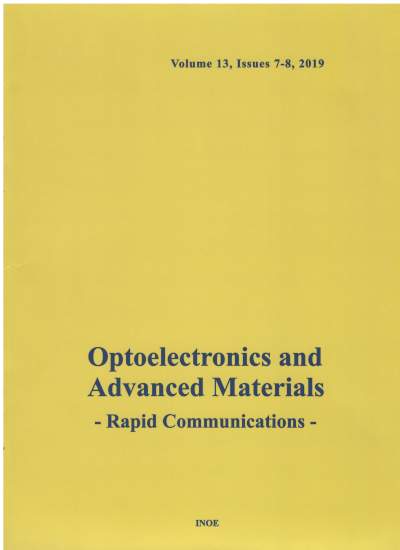Abstract
A generic model of a long-wavelength infrared photodetector based on Hg1-xCdxTe (x=0.22) narrow bandgap semiconductor
has been developed to examine the potential of the device for possible application in free space optical communication at
10.6 µm. The dark current analysis of the detector has been carried out by considering all the dominant current components
including tunneling. The lifetime of the carriers has been modeled by taking into the account radiative as well as non�radiative recombination processes. The analysis revealed that the current in photodetector under reverse bias is dominated
by trap assisted tunneling component of the current which causes a reduction in the quantum efficiency value at low and
moderate reverse bias. The noise equivalent power decreases with increase in value of the equivalent load resistance of
the receiver circuit. The photodetector exhibits a dark current, 6
0 4 10− I ≈ × A, zero-bias dynamic
resistance, ≈ Ω
6 R0 10 , quantum efficiency, η ≈ 67 % at 10.6 µm and noise equivalent power, (NEP) 13 10− ≈ W-Hz1/2.
Keywords
Free space optical communication, LWIR, Photodetector, HgCdTe, NEP.
Citation
P. K. SAXENA, P. CHAKRABARTI, Analytical simulation of HgCdTe photovoltaic detector for long wavelength infrared (LWIR) applications, Optoelectronics and Advanced Materials - Rapid Communications, 2, 3, March 2008, pp.140-147 (2008).
Submitted at: Feb. 22, 2008
Accepted at: March 16, 2008
